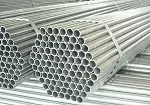Are you in the market for quality pipe flanges and fittings? Look no further than Kian Huat Metal in Singapore! Pipe flanges are essential components in any piping system, connecting two pipes together or connecting a pipe to another fitting or equipment component. Pipe flanges come in various shapes and sizes, and are used in a wide range of applications. In this blog post, we’ll cover everything you need to know about pipe flanges and fittings, from what they are to why they’re important. Read on to learn more!
Types of Pipe Flanges
When it comes to pipe flanges, there are several types available in the market. The choice of pipe flange largely depends on the specific application and the pipe fittings being used. Let’s take a look at some of the common types of pipe flanges available.
- Weld Neck Flanges: This type of pipe flange has a long tapered hub, which is welded onto the pipe. The other end of the flange is machined to be the same dimensions as the inside of the pipe. Weld neck flanges are known for their high durability and strength, making them a popular choice for high-pressure and high-temperature applications.
- Slip-On Flanges: As the name suggests, slip-on flanges slip over the pipe and are then welded in place. These flanges are easy to install and are widely used in low-pressure applications. They are not recommended for high-pressure applications as they are prone to leakages.
Materials Used for Pipe Flanges
Pipe flanges can be made from a variety of materials, including stainless steel, carbon steel, cast iron, aluminum, brass, and PVC. Each material has its own unique properties that make it suitable for certain applications.
Stainless steel is a popular choice for pipe flanges due to its high strength, corrosion resistance, and durability. Kian Huat Metal, a top provider of stainless steel fabrication Singapore, offers a wide range of stainless steel flanges that can withstand even the most extreme operating conditions.
Carbon steel flanges are also commonly used in industrial applications because they are affordable, strong, and can withstand high temperatures and pressures. Cast iron flanges are typically used in low-pressure applications, while aluminum and brass flanges are more suitable for lightweight applications.
Dimensions of Pipe Flanges
When it comes to pipe flanges, the dimensions are crucial in ensuring that they fit securely and seamlessly with the pipes and fittings. There are several key dimensions to consider when selecting pipe flanges, including the diameter, thickness, and bolt circle diameter. The diameter of the flange is the measurement of the inner circle of the flange, which determines the size of the pipe it can be used with. The thickness of the flange is important as it affects the strength of the joint. Bolt circle diameter is the distance between the center of the bolt holes on the flange.
At Kian Huat Metal, we offer pipe flanges made from various materials, including stainless steel, carbon steel, and alloy steel. The dimensions of our pipe flanges are manufactured according to industry standards, such as ASME and ANSI.
Advantages of Using Pipe Flanges
- Easy to Install and Replace: Pipe flanges provide an easy way to connect two pipes or a pipe to any type of fitting or equipment component. They can be easily installed and replaced without causing any damage to the system.
- High Strength and Durability: Pipe flanges are made from high-quality materials such as stainless steel, carbon steel, and alloy steel, which makes them strong and durable. They can withstand high pressure, high temperatures, and harsh environmental conditions.
- Flexibility and Customization: Pipe flanges come in a variety of shapes, sizes, and materials, which gives them the flexibility to meet the requirements of different applications. They can be customized to suit specific needs and can be designed to fit various piping systems.
- Leak-Proof Connections: Pipe flanges are designed to provide leak-proof connections between two pipes or a pipe and a fitting. This ensures that there is no loss of fluid or gas from the system, which improves the overall efficiency and performance of the system.
How to Select the Right Pipe Flange for Your Application
When selecting a pipe flange, it is important to consider the following factors to ensure that the right flange is selected for the specific application:
- Pressure and temperature rating: The pressure and temperature rating of the pipe flange must be able to withstand the operating conditions of the application.
- Material: The material of the pipe flange should be chosen based on the compatibility with the fluid being transported and its corrosion resistance.
- Size: The size of the pipe flange should be selected based on the pipe diameter and the flange class required.
- Type of connection: There are various types of flanges such as slip-on, threaded, weld neck, socket weld, lap joint, and blind flanges. The type of connection needed should be considered for proper attachment.


